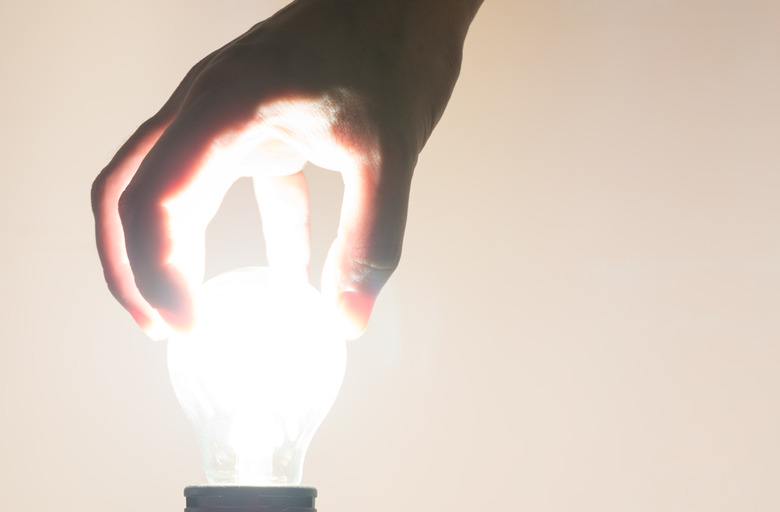How To Use A 12-Volt LED On A 24 Volt
Although it's easy to assume that a 24-volt power supply can run anything requiring up to 24 volts of electricity, the reality of electrical circuits is not quite so simple. Connecting a single 12-volt light to a 24-volt power supply quickly burns out or dramatically destroys the light. It is possible to wire a 12-volt LED light to a 24-volt system, but it takes a few steps to do so safely.
TL;DR (Too Long; Didn't Read)
Because lights are designed to work within a narrow voltage range, connecting a single 12-volt light to a 24-volt power supply quickly destroys a light, whether it's a standard incandescent or an LED. However, with the use of resistors or wiring in series, it's possible to deal with the excessive voltage, allowing you to safely run LED lighting on a power circuit higher than intended. Be careful when working with electrical systems and do not work on circuits while wearing metal jewelry.
Excess Voltage
Excess Voltage
12-volt lights are compatible with 24-volt systems – they use electricity and can be wired into the system. Light bulbs and light strips are designed to operate at slightly lower and slightly higher voltages. They can dim and brighten somewhat while still operating safely. The problem with adding them to a 24-volt system is the excess voltage. Without anything to regulate the amount of electricity entering the light unit, the power supply overloads the light and causes it to burn out, or in the case of incandescent bulbs, causes the filament to overheat and melt, which can cause the bulb to burst. Because LEDs operate without a heated filament, they can be wired into an overpowered system, but the excess voltage must be dealt with first.
Two-Bulb Series
Two-Bulb Series
The easiest way to wire 12-volt LEDs into a 24-volt system is to add a second identical LED to the system. When the power is switched on, the first bulb's operation creates 12 volts of resistance, allowing the second bulb to operate as though it is on a 12-volt system. It is crucial to use identical lights for this, however. Two 12-volt lights of different design may use slightly different amounts of power, which runs the risk of burning out one bulb quickly with the other bulb following soon after.
Using Resistors
Using Resistors
If you only want to use a single 12-volt LED on your 24-volt system, you can make use of resistors attached to the circuit to lower the voltage to appropriate levels. For a 12-volt light, inserting a 24-ohm resistor rated at 6 watts into the line leading into the light consumes enough electricity for the light to function safely.
Cite This Article
MLA
Flournoy, Blake. "How To Use A 12-Volt LED On A 24 Volt" sciencing.com, https://www.sciencing.com/use-12volt-led-24-volt-7546920/. 4 June 2018.
APA
Flournoy, Blake. (2018, June 4). How To Use A 12-Volt LED On A 24 Volt. sciencing.com. Retrieved from https://www.sciencing.com/use-12volt-led-24-volt-7546920/
Chicago
Flournoy, Blake. How To Use A 12-Volt LED On A 24 Volt last modified March 24, 2022. https://www.sciencing.com/use-12volt-led-24-volt-7546920/
